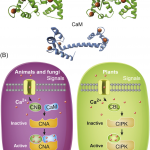Editorial: Redeploying plant defences (Nature Plants)
 With COVID19 ravaging across the globe, the medicinal value of plants and related research fields e.g., phytochemistry, ethnobotany, etc., is presently in focus. The drug development chain, though extremely promising, is not an immediate solution as it is a long, multistep process. Nature Plants highlights the potential for plant-based treatments to at least alleviate symptoms and severity of the viral infection. Secondary metabolites naturally produced by plants, though not a cure, have great potential to positively impact recovery rates. They are known in local contexts and available for use immediately. As examples, the Chinese government encouraged the use of traditional Chinese decoctions, which have years of clinical evidence to support their utility and side effects, as medications in its list of COVID19 management recommendations. Activities include antiviral properties (e.g., inhibition of viral entry or viral enzyme function) of Chinese skullcap extract (flavone baicalein), anti-influenza properties of some dandelion plant parts, and the antimalarial properties of quinine and Atrtemissia annua. Combinations of anti-inflammatory and antiviral herbs e.g., Lianhua Qingwen (11herbs), have been capsulated and were previously used successfully with the SARS virus. Investing in medicinal plant research and better understanding their taxonomy, ecology and conservation will be critical to management of future pandemics. (Summary by Sally Mallowa) Nature Plants 10.1038/s41477-020-0628-0
With COVID19 ravaging across the globe, the medicinal value of plants and related research fields e.g., phytochemistry, ethnobotany, etc., is presently in focus. The drug development chain, though extremely promising, is not an immediate solution as it is a long, multistep process. Nature Plants highlights the potential for plant-based treatments to at least alleviate symptoms and severity of the viral infection. Secondary metabolites naturally produced by plants, though not a cure, have great potential to positively impact recovery rates. They are known in local contexts and available for use immediately. As examples, the Chinese government encouraged the use of traditional Chinese decoctions, which have years of clinical evidence to support their utility and side effects, as medications in its list of COVID19 management recommendations. Activities include antiviral properties (e.g., inhibition of viral entry or viral enzyme function) of Chinese skullcap extract (flavone baicalein), anti-influenza properties of some dandelion plant parts, and the antimalarial properties of quinine and Atrtemissia annua. Combinations of anti-inflammatory and antiviral herbs e.g., Lianhua Qingwen (11herbs), have been capsulated and were previously used successfully with the SARS virus. Investing in medicinal plant research and better understanding their taxonomy, ecology and conservation will be critical to management of future pandemics. (Summary by Sally Mallowa) Nature Plants 10.1038/s41477-020-0628-0
[altmetric doi=”10.1038/s41477-020-0628-0″ details=”right” float=”right”]



